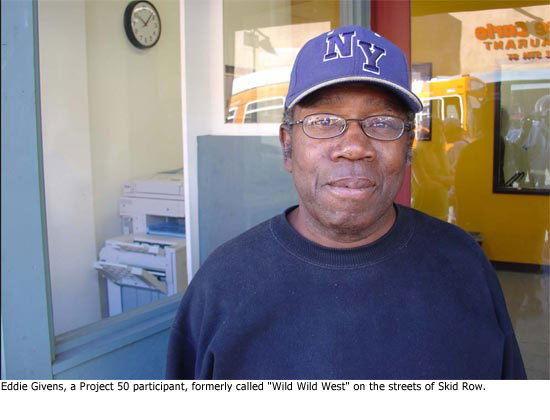Not because it’s easy
August 3, 2010
Philosophical arguments for—and against—an innovative initiative to combat homelessness surfaced Tuesday as Project 50’s most passionate proponent on the Board of Supervisors exchanged views with its leading skeptic.
Their comments came in response to the Los Angeles Times’ four-part series on Project 50, which began in late 2007 and has provided housing to those deemed likeliest to die on Skid Row. It has done so without requiring participants to agree in advance to treatment for substance abuse and other problems, although clients are continually pressured to avail themselves of a range of medical, psychological and drug treatment services once they enter the program. So far, 100% of those who have been housed have received at least one of those services.
Tuesday’s debate turned on the question of housing people without first requiring that they give up drugs.
Supervisor Michael D. Antonovich, a longtime critic of Project 50, spoke first, followed by Supervisor Zev Yaroslavsky, the program’s sponsor and most vocal supporter on the board.
Here is a summary of what each supervisor had to say:
Antonovich started by reading from the newspaper’s first installment, which offered a range of anecdotes about the program’s successes and failures, and ended with an account of the difficulties one long-time drug user was experiencing. It centered on a woman who was beset with “psychological triggers everywhere,” including the smell of crack cocaine vapors as she tried to resist temptation. At one point, she tried to turn her money over to a program official so she would be unable to purchase the drugs that were tempting her. But the official explained she could not legally take her money, and instead helplessly watched as the woman went in search of drugs. “Was it possible to keep people under a roof, even if their addictions and mental illness remained untreated?” Antonovich read, quoting from the article.
Antonovich then reprised some of the questions he had asked when Project 50 came before the board in 2008. He said that assurances he had received then were being proven wrong by the latest quarterly report from Project 50, which he said indicated that “two years into the demonstration, half of the residents with a history of substance abuse are not being treated, which is warehousing without healing.”
He asked Chief Executive Officer William T Fujioka to report back in 14 days on “prohibitions currently in place against Project 50 residents continuing to abuse substances while being housed at taxpayers’ expense.”
Then it was Supervisor Yaroslavsky’s turn.
“I think everyone within the sound of my voice should understand a few things about this program,” Yaroslavsky said. “No. 1, nobody was required as a prerequisite of entering the program [to submit] to a substance abuse test or treatment or see a shrink or do any of the other things as a precondition of entering the program. This is what is revolutionary about this program…If you take the 50 most vulnerable…people on Skid Row or anywhere else in the county and say, ‘Hey, we’ve got a unit for you but we want you to go see a psychiatrist first,’ he’ll tell you to take a walk. That’s been the experience.”
Yaroslavsky noted that the participants “were the 62 most chronically homeless people on the streets of downtown Los Angeles at the time they were selected.” He added that “100% of the people who were part of this program got [at least one kind of] treatment—100%. If we had not done this program, none of them would have gotten treatment. They would still be living on the street. And many of them would be dead.”
He said he was reminded of “President Kennedy’s comment when he launched the project to the moon, where he said, ‘We choose to go to the moon not because it is easy but because it is hard.’ This county chose to do Project 50 not because it was easy but because it was hard.”
He concluded by praising Fujioka and others involved in getting Project 50 launched for “having the courage to risk failure.”
“That’s what we don’t do enough of in the public sector…When you try something different, you risk failure. And nobody wants to be associated with a failure. This is not a failure. This is a success—a risk worth taking.”
To date, 84% of the Project 50 participants are still being housed.
Read Zev’s blog on Project 50 here.













 405 bridge work causes a stink
405 bridge work causes a stink

